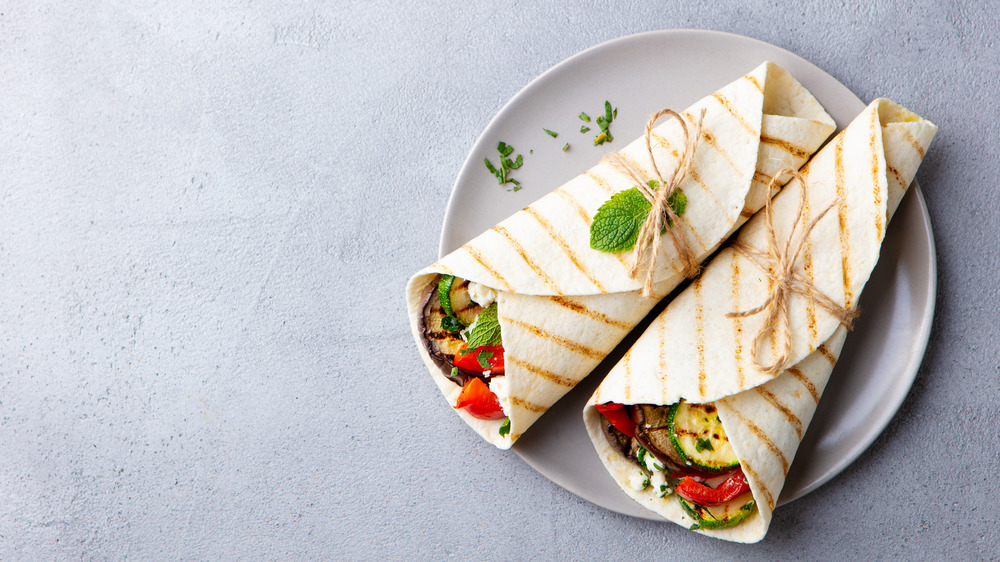Are Wraps Actually Healthier Than Sliced Bread?
When it comes to making your lunch, the options are endless. With the wellness trend here to stay, many have explored other options for their beloved sandwiches. But, of course, not all breads and wraps (flatbreads and tortillas) are created equal. The List spoke with registered dietician Emily Wunder, MSCN, RD, LDN, to discuss the difference between the two.
For starters, it's important to check the label — the same as it is for other foods. "Look at the ingredients of the wrap," Wunder recommends. "There are so many options out there like whole wheat, spinach, red pepper, and more. They all sound super healthy, but check out the ingredient list located under the food label to ensure these healthy ingredients are the first listed and that there are not a ton of other unnecessary ingredients included, like sugar."
While the front of the label can tout all kinds of health benefits, it's the back of the packaging that doesn't lie. Since added sugars should only constitute about 10 percent of your daily caloric intake, per Verywell Fit, it's important to take time to find what's best for you. Plus, ingredients are generally listed in order of amount, meaning that the first ingredients are the ones that have the highest concentration in the product you're purchasing.
So, if you're opting for a wrap, make sure you look for whole ingredients and additives that you can pronounce. As with most foods, the fewer ingredients, the better.
Make sure your wrap meets your nutritional needs
Also, with regard to food labels, oils, artificial sweeteners, and other stabilizers can hide behind healthy names like "agave" and "maple sugar." These are essentially the same as cane sugar, so, whether you're purchasing a loaf of bread or a wrap, always scrutinize the label. "Check that food label. This is your best tool to determine if a wrap or any food meets your nutrition needs," Wunder says.
"When checking out wraps, keep in mind that, according to the USDA, a 28 gram slice of whole wheat bread provides 69 calories, 0.9 grams of fat, 12 grams of carbohydrates, and 3.6 grams of protein. A whole wheat wrap from Mission will come in at 110 calories, 2 grams of fat, 22 grams of carbohydrates, and 4 grams of protein. So in this case, if you are using two slices of bread, the nutrition content would be pretty similar but with higher protein from the wheat bread," she explains.
So, it's not always one over the other when talking bread vs. wrap; it's important to compare. And while the ingredients will tell you what you need to know, it's also important to note how you feel after eating different bread and/or wrap options. Do you have more energy after you eat a wrap or is it the opposite? Finding high quality products and looking at both the nutrition label and the ingredients can set you up for success — inside and out. As Wunder notes, "Just remember all products are different, so always check those food labels and ingredient lists to ensure you are not getting duped by the marketing on a product."

